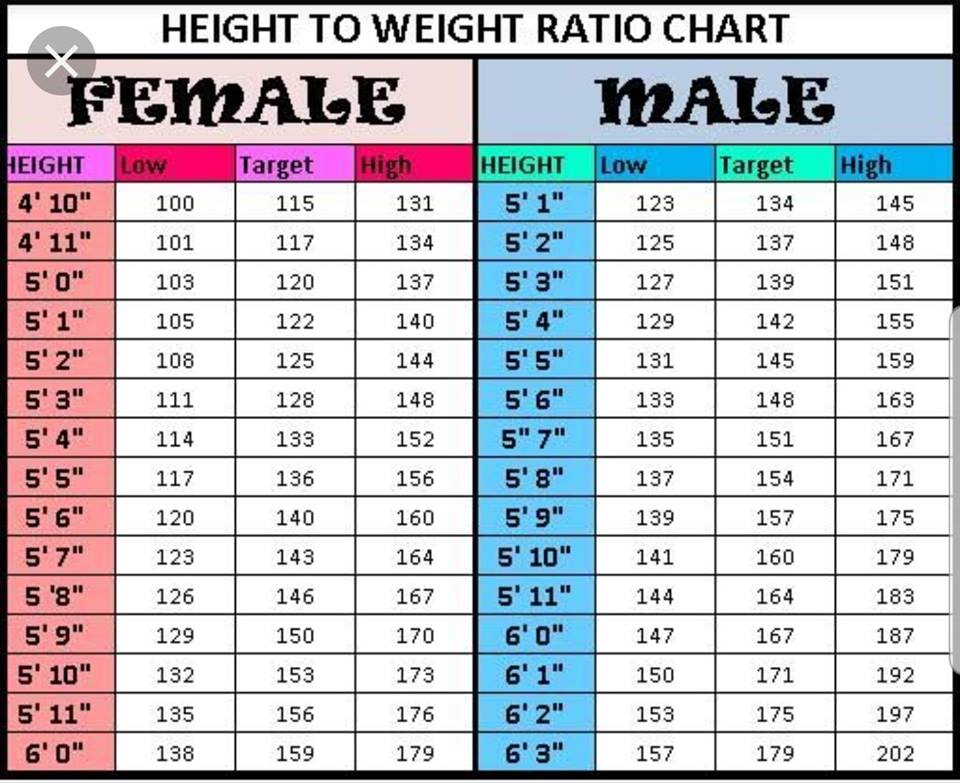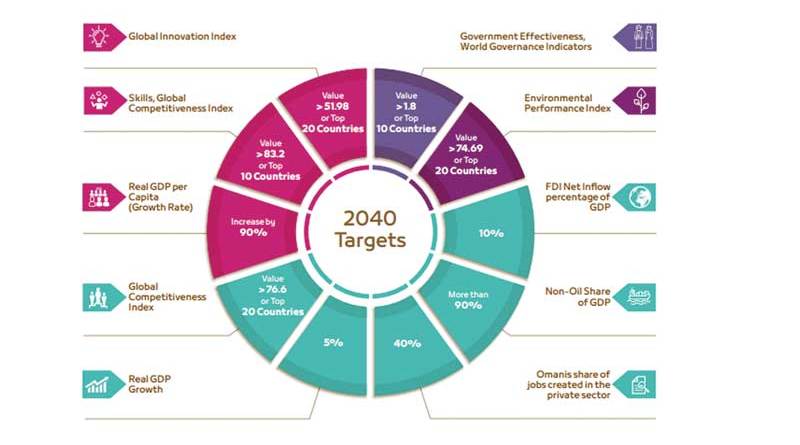Average weight two month old
Average baby weight: Chart and development
Weight is one indicator of good nutrition and physical development. It can therefore be helpful to know about babies’ average weight month by month.
First, it is worth noting that average weight is not “normal” weight. Just like adults, babies come in all shapes and sizes. If a baby’s weight is in a lower percentile, this does not necessarily signal a problem with their growth or physical development. With this in mind, using a weight chart can help a person generally track their baby’s growth.
The Centers for Disease Control and Prevention (CDC) recommend using the World Health Organization (WHO) weight chart for babies up to 2 years of age.
This article describes the average weight of a baby month by month from birth. It also explores what can affect a baby’s weight.
According to the WHO, the average birth weight of a full-term male baby is 7 pounds (lb) 6 ounces (oz), or 3.3 kilograms (kg). The average birth weight of a full-term female is 7 lb 2 oz, or 3. 2 kg.
The average weight of a baby born at 37–40 weeks ranges from 5 lb 8 oz to 8 lb 13 oz. This is 2.5 to 4 kg.
At delivery, experts consider a low birth weight to be less than 5 lb 8 oz, or 2.5 kg.
It is common for babies to lose around 10% of their weight shortly after birth. This decrease is mostly due to fluid loss and usually nothing to worry about. Most babies gain back this weight within 1 week.
Weight charts can help a person tell what percentile their baby’s weight falls into. For example, if their weight is in the 60th percentile, it means that 40% of babies of the same age and sex weigh more, and 60% of these babies weigh less.
This does not necessarily mean that any baby weighs too much or too little. It can simply indicate where a baby’s weight falls on a spectrum.
The chart below shows baby weights in the 50th percentile. This is the average weight. Male babies tend to weigh a little more than female babies, so the chart is divided by sex.
| Baby age | Female 50th percentile weight | Male 50th percentile weight |
| Birth | 7 lb 2 oz (3.2 kg) | 7 lb 6 oz (3.3 kg) |
| 1 month | 9 lb 4 oz (4.2 kg) | 9 lb 14 oz (4.5 kg) |
| 2 months | 11 lb 5 oz (5.1 kg) | 12 lb 4 oz (5.6 kg) |
| 3 months | 12 lb 14 oz (5.8 kg) | 14 lb 1 oz (6.4 kg) |
| 4 months | 14 lb 3 oz (6.4 kg) | 15 lb 7 oz (7.0 kg) |
| 5 months | 15 lb 3 oz (6.9 kg) | 16 lb 9 oz (7.5 kg) |
| 6 months | 16 lb 1 oz (7.3 kg) | 17 lb 8 oz (7.9 kg) |
| 7 months | 16 lb 14 oz (7.6 kg) | 18 lb 5 oz (8.3 kg) |
| 8 months | 17 lb 8 oz (7.9 kg) | 18 lb 15 oz (8.6 kg) |
| 9 months | 18 lb 2 oz (8.2 kg) | 19 lb 10 oz (8.9 kg) |
| 10 months | 18 lb 11 oz (8.5 kg) | 20 lb 3 oz (9.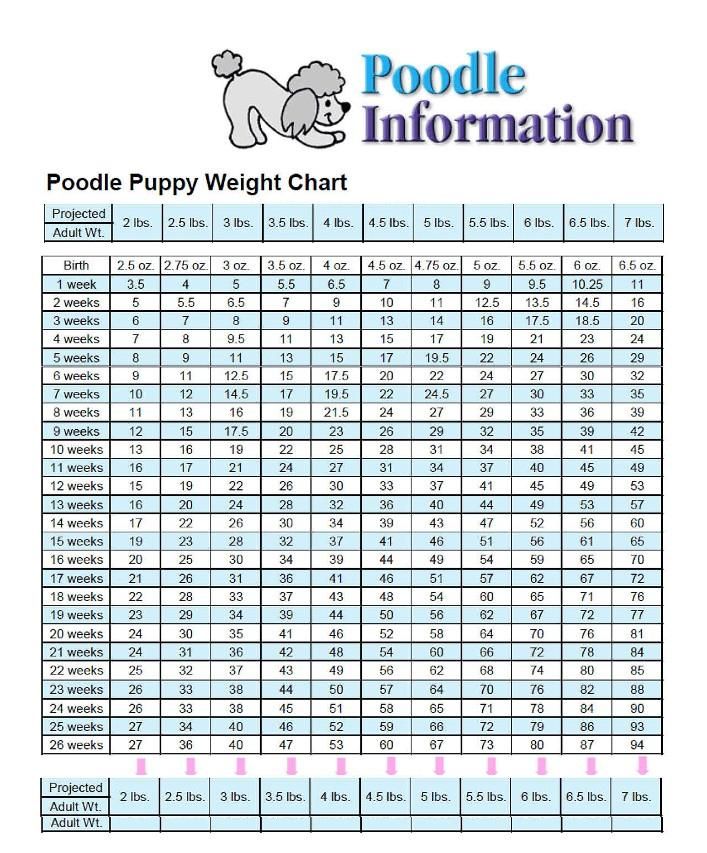 2 kg) 2 kg) |
| 11 months | 19 lb 4 oz (8.7 kg) | 20 lb 12 oz (9.4 kg) |
| 12 months | 19 lb 12 oz (8.9 kg) | 21 lb 4 oz (9.6 kg) |
Babies grow and gain weight the fastest within the first 6 months of life. Although this can vary, babies tend to gain around 4–7 oz, or 113–200 grams (g), per week in the first 4–6 months.
Weight gain then slows slightly, with an average gain of around 3–5 oz (about 85–140 g) per week when the baby is 6–18 months. On average, babies triple their birth weight by their first birthday.
Growth patterns do not follow a clear schedule, however.
Some babies gain weight steadily and stay in the same percentile, or close to it, for several months. Others gain weight rapidly, signalling a growth spurt, which can happen at any time. This may move a baby into a new weight percentile.
It is important not to focus on weight as the only indicator of physical development. Other measurements of this development include the baby’s length and head circumference.
Considering all three measurements gives doctors an idea about how the baby is growing, compared with other babies of the same age and sex.
Meanwhile, it is also important to keep other developmental milestones in mind. Various checklists of milestones by age are available, including one from Pathways.org, which is endorsed by organizations such as the American Academy of Pediatrics and the National Association of Pediatric Nurse Practitioners.
For anyone looking for more information about what influences the weight of a baby, several factors can be involved, including:
Sex
Male newborns tend to be bigger than female newborns, and they typically gain weight a little faster during infancy.
Nutrition
Weight gain and growth rates can also depend on whether the baby consumes breast milk or formula.
The American Academy of Pediatrics notes that breastfed babies gain weight and grow faster than formula-fed babies during the first 6 months.
However, that rate can shift during the next 6 months. Breastfed babies may gain weight and grow more slowly than formula-fed babies when they are aged 6 months to 1 year.
Breastfed babies may gain weight and grow more slowly than formula-fed babies when they are aged 6 months to 1 year.
Medical conditions
Underlying health issues can cause a baby to gain weight more slowly. For example, babies with congenital heart irregularities may gain weight at a slower rate than babies without this condition.
Health issues that affect nutrient absorption or digestion, such as celiac disease, may also lead to slow weight gain.
Prematurity
Babies born prematurely may grow and gain weight more slowly during their first year than babies born at full term.
However, many babies born prematurely gain weight rapidly and “catch up” by about their first birthday.
The average birth weight for full-term male babies is 7 lb 6 oz, or 3.3 kg. For female babies born full-term, the average birth weight is 7 lb 2 oz, or 3.2 kg.
Baby weight charts can help a healthcare team track a baby’s physical development by comparing the baby’s weight with the weights of others of the same age and sex.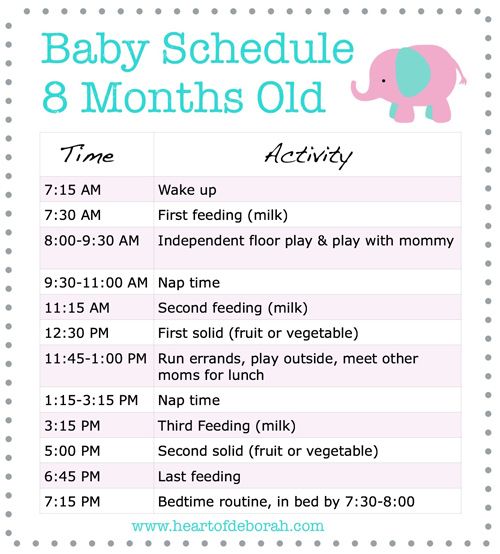
Still, a doctor usually looks for steady growth, rather than a target percentile, when assessing a baby’s physical development. And even if a baby’s weight is in a lower percentile, they will not necessarily be a small adult — just as longer babies do not necessarily become tall adults.
Knowing about average weights by month can help people gauge their babies’ physical development, but doctors also look for other important indicators, such as length and head circumference.
Healthcare professionals also take into account whether a baby is generally hitting other milestones on time. And by taking a detailed medical history, they can rule out any medical conditions or nutritional considerations that may be preventing a baby from gaining weight appropriately.
Average baby weight: Chart and development
Weight is one indicator of good nutrition and physical development. It can therefore be helpful to know about babies’ average weight month by month.
First, it is worth noting that average weight is not “normal” weight. Just like adults, babies come in all shapes and sizes. If a baby’s weight is in a lower percentile, this does not necessarily signal a problem with their growth or physical development. With this in mind, using a weight chart can help a person generally track their baby’s growth.
Just like adults, babies come in all shapes and sizes. If a baby’s weight is in a lower percentile, this does not necessarily signal a problem with their growth or physical development. With this in mind, using a weight chart can help a person generally track their baby’s growth.
The Centers for Disease Control and Prevention (CDC) recommend using the World Health Organization (WHO) weight chart for babies up to 2 years of age.
This article describes the average weight of a baby month by month from birth. It also explores what can affect a baby’s weight.
According to the WHO, the average birth weight of a full-term male baby is 7 pounds (lb) 6 ounces (oz), or 3.3 kilograms (kg). The average birth weight of a full-term female is 7 lb 2 oz, or 3.2 kg.
The average weight of a baby born at 37–40 weeks ranges from 5 lb 8 oz to 8 lb 13 oz. This is 2.5 to 4 kg.
At delivery, experts consider a low birth weight to be less than 5 lb 8 oz, or 2.5 kg.
It is common for babies to lose around 10% of their weight shortly after birth.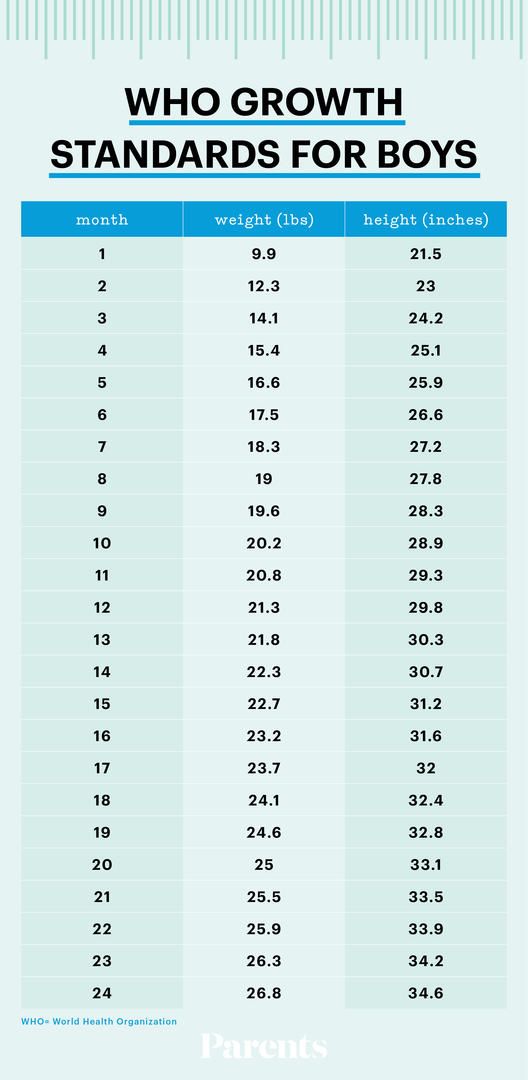 This decrease is mostly due to fluid loss and usually nothing to worry about. Most babies gain back this weight within 1 week.
This decrease is mostly due to fluid loss and usually nothing to worry about. Most babies gain back this weight within 1 week.
Weight charts can help a person tell what percentile their baby’s weight falls into. For example, if their weight is in the 60th percentile, it means that 40% of babies of the same age and sex weigh more, and 60% of these babies weigh less.
This does not necessarily mean that any baby weighs too much or too little. It can simply indicate where a baby’s weight falls on a spectrum.
The chart below shows baby weights in the 50th percentile. This is the average weight. Male babies tend to weigh a little more than female babies, so the chart is divided by sex.
| Baby age | Female 50th percentile weight | Male 50th percentile weight |
| Birth | 7 lb 2 oz (3.2 kg) | 7 lb 6 oz (3.3 kg) |
| 1 month | 9 lb 4 oz (4.2 kg) | 9 lb 14 oz (4.5 kg) |
| 2 months | 11 lb 5 oz (5.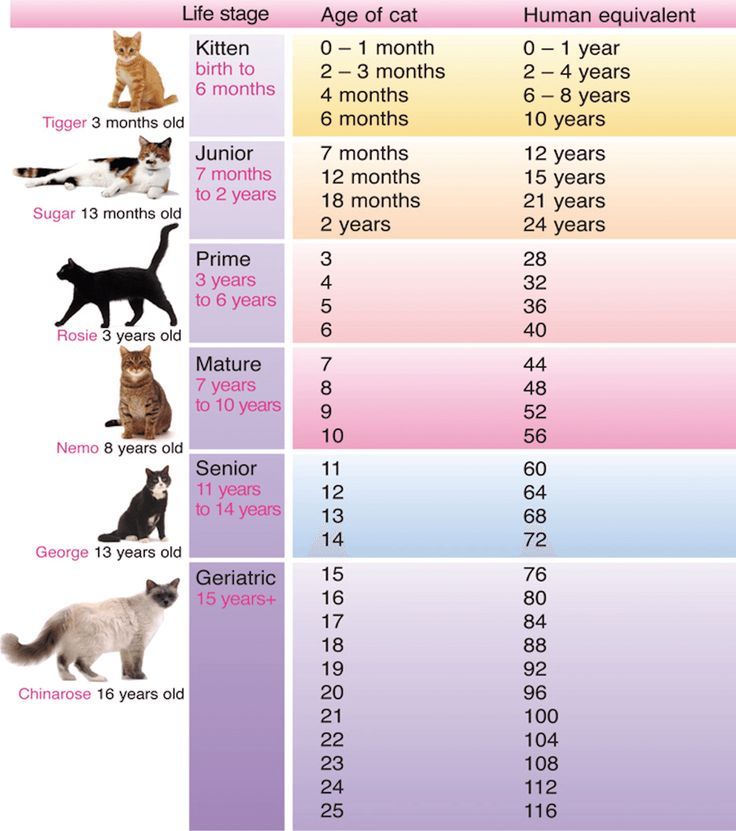 1 kg) 1 kg) | 12 lb 4 oz (5.6 kg) |
| 3 months | 12 lb 14 oz (5.8 kg) | 14 lb 1 oz (6.4 kg) |
| 4 months | 14 lb 3 oz (6.4 kg) | 15 lb 7 oz (7.0 kg) |
| 5 months | 15 lb 3 oz (6.9 kg) | 16 lb 9 oz (7.5 kg) |
| 6 months | 16 lb 1 oz (7.3 kg) | 17 lb 8 oz (7.9 kg) |
| 7 months | 16 lb 14 oz (7.6 kg) | 18 lb 5 oz (8.3 kg) |
| 8 months | 17 lb 8 oz (7.9 kg) | 18 lb 15 oz (8.6 kg) |
| 9 months | 18 lb 2 oz (8.2 kg) | 19 lb 10 oz (8.9 kg) |
| 10 months | 18 lb 11 oz (8.5 kg) | 20 lb 3 oz (9.2 kg) |
| 11 months | 19 lb 4 oz (8.7 kg) | 20 lb 12 oz (9.4 kg) |
| 12 months | 19 lb 12 oz (8.9 kg) | 21 lb 4 oz (9.6 kg) |
Babies grow and gain weight the fastest within the first 6 months of life. Although this can vary, babies tend to gain around 4–7 oz, or 113–200 grams (g), per week in the first 4–6 months.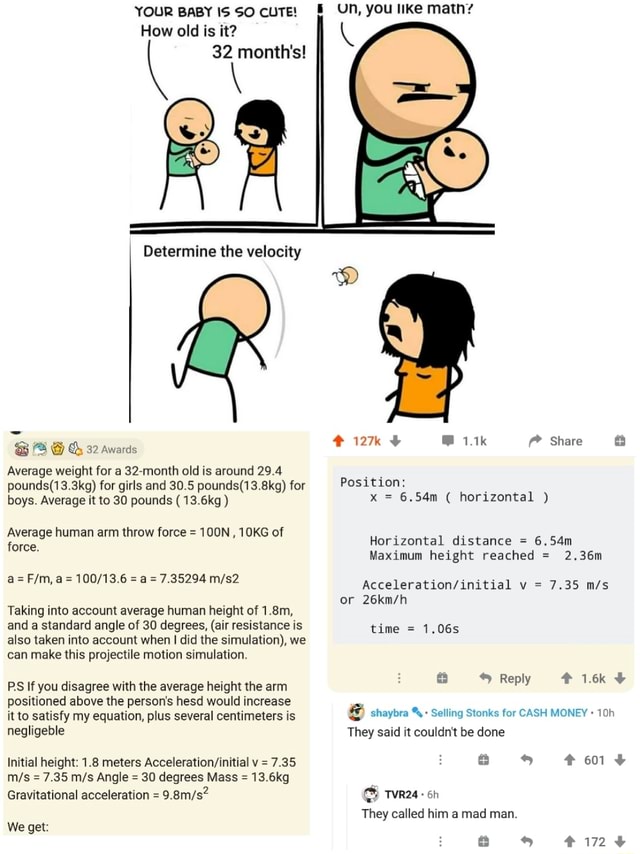
Weight gain then slows slightly, with an average gain of around 3–5 oz (about 85–140 g) per week when the baby is 6–18 months. On average, babies triple their birth weight by their first birthday.
Growth patterns do not follow a clear schedule, however.
Some babies gain weight steadily and stay in the same percentile, or close to it, for several months. Others gain weight rapidly, signalling a growth spurt, which can happen at any time. This may move a baby into a new weight percentile.
It is important not to focus on weight as the only indicator of physical development. Other measurements of this development include the baby’s length and head circumference.
Considering all three measurements gives doctors an idea about how the baby is growing, compared with other babies of the same age and sex.
Meanwhile, it is also important to keep other developmental milestones in mind. Various checklists of milestones by age are available, including one from Pathways.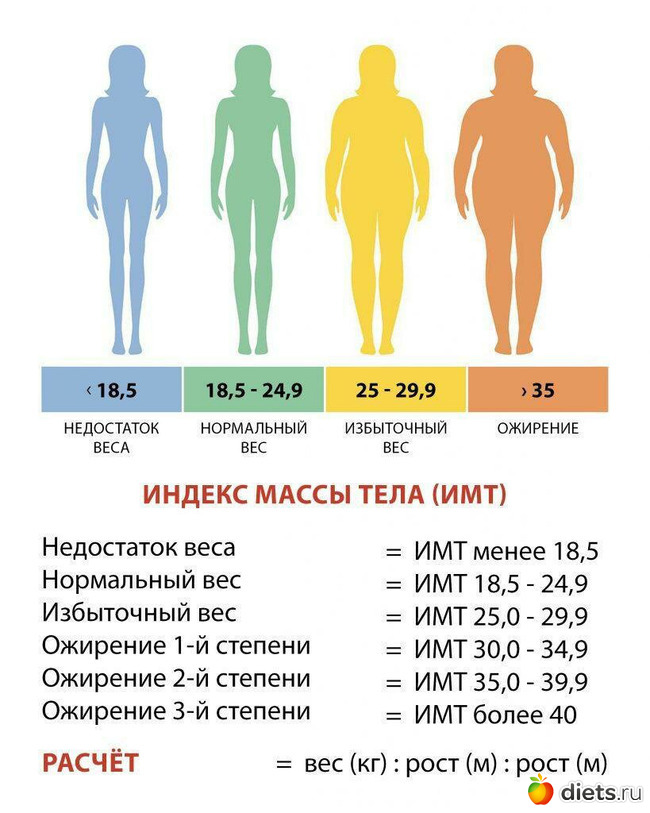 org, which is endorsed by organizations such as the American Academy of Pediatrics and the National Association of Pediatric Nurse Practitioners.
org, which is endorsed by organizations such as the American Academy of Pediatrics and the National Association of Pediatric Nurse Practitioners.
For anyone looking for more information about what influences the weight of a baby, several factors can be involved, including:
Sex
Male newborns tend to be bigger than female newborns, and they typically gain weight a little faster during infancy.
Nutrition
Weight gain and growth rates can also depend on whether the baby consumes breast milk or formula.
The American Academy of Pediatrics notes that breastfed babies gain weight and grow faster than formula-fed babies during the first 6 months.
However, that rate can shift during the next 6 months. Breastfed babies may gain weight and grow more slowly than formula-fed babies when they are aged 6 months to 1 year.
Medical conditions
Underlying health issues can cause a baby to gain weight more slowly. For example, babies with congenital heart irregularities may gain weight at a slower rate than babies without this condition.
Health issues that affect nutrient absorption or digestion, such as celiac disease, may also lead to slow weight gain.
Prematurity
Babies born prematurely may grow and gain weight more slowly during their first year than babies born at full term.
However, many babies born prematurely gain weight rapidly and “catch up” by about their first birthday.
The average birth weight for full-term male babies is 7 lb 6 oz, or 3.3 kg. For female babies born full-term, the average birth weight is 7 lb 2 oz, or 3.2 kg.
Baby weight charts can help a healthcare team track a baby’s physical development by comparing the baby’s weight with the weights of others of the same age and sex.
Still, a doctor usually looks for steady growth, rather than a target percentile, when assessing a baby’s physical development. And even if a baby’s weight is in a lower percentile, they will not necessarily be a small adult — just as longer babies do not necessarily become tall adults.
Knowing about average weights by month can help people gauge their babies’ physical development, but doctors also look for other important indicators, such as length and head circumference.
Healthcare professionals also take into account whether a baby is generally hitting other milestones on time. And by taking a detailed medical history, they can rule out any medical conditions or nutritional considerations that may be preventing a baby from gaining weight appropriately.
Weight and height of a child by months up to a year - Table of weight norms for babies
A young mother often worries about whether her baby is developing correctly. And the weight of the child is one of the “sick” questions that often comes up on the playground.
Undoubtedly, how much a newborn is gaining weight is really important to know. But remember that the height and weight of the child are individual indicators. And they may not always fit into beautiful statistics. Although the approximate norm for the weight of a newborn is calculated based on general values.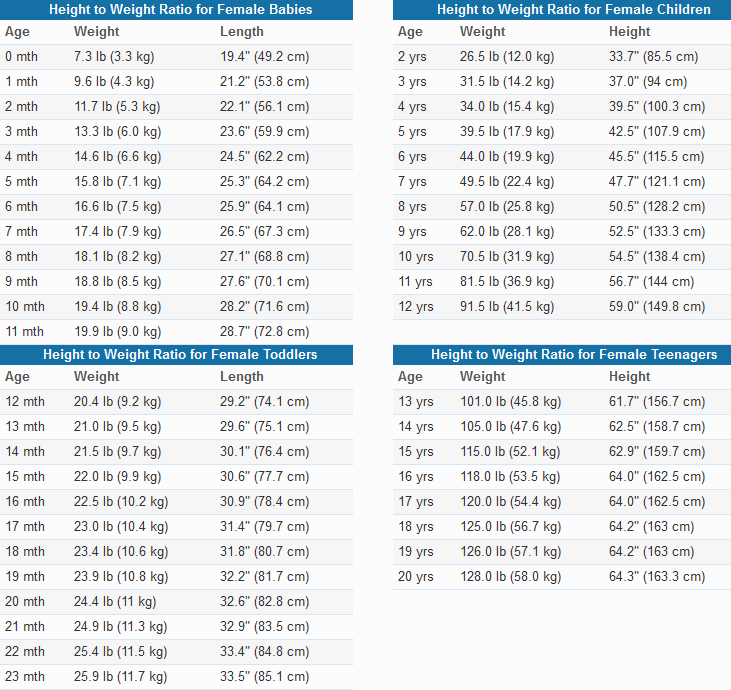 Doctors who carry out regular weighing of a newborn also have their own guidelines.
Doctors who carry out regular weighing of a newborn also have their own guidelines.
The table below shows the height and weight of the newborn by month. The figures take into account statistical data and recommendations of pediatricians (the discrepancy, by the way, is only 3%).
| Child's age, months | Boy, weight, g | Boy, height, cm | Girl, weight, g | Girl, height, cm |
|---|---|---|---|---|
| Newborn | 3 600 | fifty | 3400 | 49.5 |
| 1 month | 4 450 | 54.5 | 4 150 | 53.5 |
| 2 month | 5 250 | 58 | 4 900 | 56.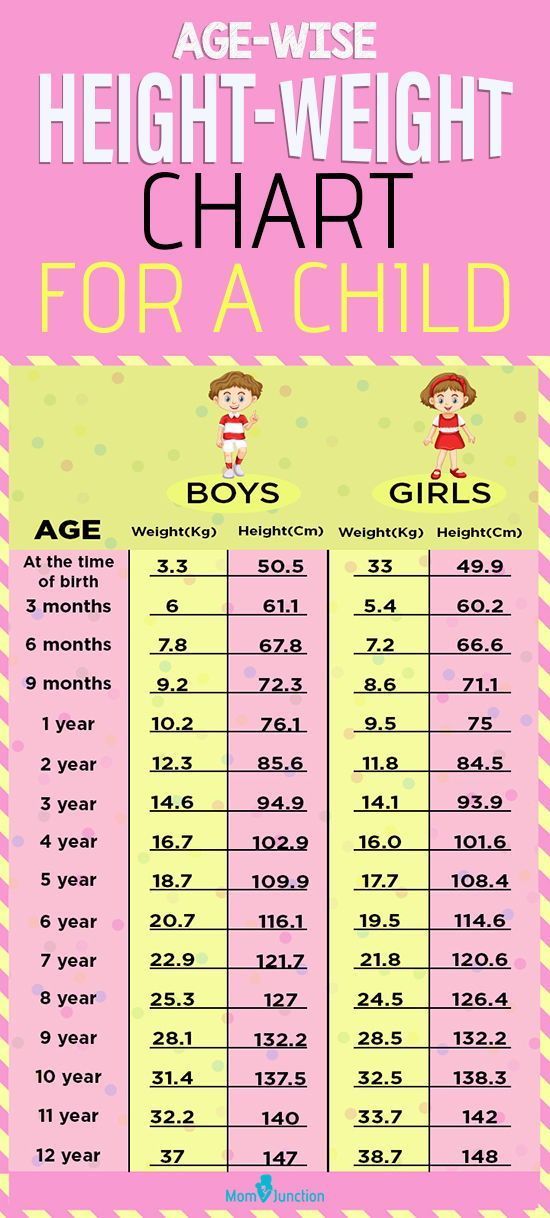 8 8 |
| 3 month | 6050 | 61 | 5 500 | 59.3 |
| 4 month | 6 700 | 63 | 6 150 | 61.5 |
| 5 month | 7 300 | 65 | 6 650 | 63.4 |
| 6 month | 7 900 | 67 | 7 200 | 65.3 |
| 7 month | 8 400 | 68.7 | 7 700 | 66.9 |
| 8 month | 8 850 | 70.3 | 8 100 | 68. 4 4 |
| 9 month | 9 250 | 71.7 | 8 500 | 70 |
| 10 month | 9 650 | 73 | 8 850 | 71.3 |
| 11 month | 10,000 | 74.3 | 9 200 | 72.6 |
| 12 month | 10 300 | 75.5 | 9 500 | 73.8 |
To use the table, you should know how to weigh a newborn correctly. Before turning on the scales, you need to remove all foreign objects from the bowl, otherwise you will get distorted data. Although you can leave a diaper on it and then press the "Tara" button to reset the result. It is necessary to put the baby in the scales at rest in order to fix the exact numbers, which can then be compared with the “ideal”.
It is necessary to put the baby in the scales at rest in order to fix the exact numbers, which can then be compared with the “ideal”.
Modern electronic scales for weighing newborns are proactive. A smart device “knows” the weight of a healthy baby in advance and compares the norm with the result. Just wait a few seconds and you will see the result. Home scales with a built-in height meter will allow you to control the physical development of your baby without visiting the clinic.
Remember that the proper weight of the child is growing in dynamics. You can follow this indicator through a mobile application that collects the results of each weigh-in.
Height and weight gain for children of the first year of life. Tables
Dear parents, your baby is growing and you are worried about whether he is gaining enough weight and height. For control, there are centile tables for assessing the physical development of children, weight and height indicators.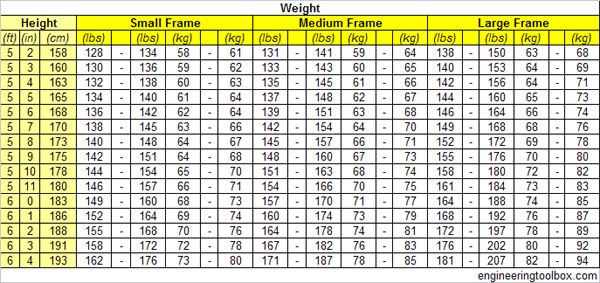 At the same time, you must remember that each baby is individual, he cannot grow according to the textbook. These weight and height recommendations are based on an average number of children and 10% deviation is normal. In addition, the centile corridor from 25% to 75% is an average physical indicator. That is why they say: Physical development is mesosomatic, macrosomatic, microsomatic.
At the same time, you must remember that each baby is individual, he cannot grow according to the textbook. These weight and height recommendations are based on an average number of children and 10% deviation is normal. In addition, the centile corridor from 25% to 75% is an average physical indicator. That is why they say: Physical development is mesosomatic, macrosomatic, microsomatic.
It is important that the weight and height indicators are in the same centile corridor, but no more than two adjacent ones. Then we can talk about harmonious development. If the gap is more than two centile corridors, the development is disharmonious. Then we can think either about an unbalanced diet or about a pathology associated with obesity (paratrophy), or protein-energy deficiency (hypotrophy). In addition, one should not forget about the constitutional characteristics of the child, about genetic predisposition. Therefore, in no case should you compare your child with a neighbor's. To talk about the health of a child, we evaluate his condition according to many criteria. This is neuropsychic development, laboratory examination data, anamnesis, heredity. How many times in my practice have I met children who gained 400-450 g in weight every month, by the year they barely gained 7.8-8 kg. But at the same time, children already at 10 months began to walk, pronounce syllables, and follow complex instructions.
This is neuropsychic development, laboratory examination data, anamnesis, heredity. How many times in my practice have I met children who gained 400-450 g in weight every month, by the year they barely gained 7.8-8 kg. But at the same time, children already at 10 months began to walk, pronounce syllables, and follow complex instructions.
We'll talk about weight and height gain for term babies. In preterm infants, rates of weight gain and height differ according to the degree of prematurity. In addition, children can be born with intrauterine malnutrition.
The tables for girls and boys are different in terms of numerical indicators, but at 1 year of age, these differences are quite minimal.
Centile tables for assessing the physical development of girls from 0 to 12 months.
| Body length (height), cm. Centiles in % | Age in months | Body weight, kg. Centiles in % | ||||||||||||
| 3 | ten | 25 | fifty | 75 | 90 | 97 | 3 | ten | 25 | fifty | 75 | 90 | 97 | |
| 45.8 | 47.5 | 49.8 | 50.7 | 52.0 | 53.1 | 53.9 | 0 | 2.6 | 2.8 | 3.0 | 3.3 | 3.7 | 3.9 | 4.1 |
| 48.5 | 50.3 | 52.1 | 53. | 55.0 | 56.1 | 57.3 | one | 3.3 | 3.6 | 3.8 | 4.2 | 4.5 | 4.7 | 5.1 |
| 51.2 | 53.3 | 55.2 | 56.8 | 58.0 | 59.3 | 60.6 | 2 | 3.8 | 4.2 | 4.5 | 4.8 | 5.2 | 5.5 | 5.9 |
| 54.0 | 56.2 | 57.6 | 59.3 | 67.7 | 61.8 | 63.6 | 3 | 4. | 4.8 | 5.2 | 5.5 | 5.9 | 6.3 | 6.7 |
| 56.7 | 58.4 | 60.0 | 61.2 | 62.8 | 64.0 | 65.7 | four | 5.0 | 5.4 | 5.8 | 6.2 | 6.6 | 7.0 | 7.5 |
| 59.1 | 60.8 | 62.0 | 63.8 | 65.1 | 66.0 | 68.0 | 5 | 5.5 | 5.9 | 6.3 | 6.7 | 7. | 7.7 | 8.1 |
| 60.8 | 62.5 | 64.1 | 65.5 | 67.1 | 68.8 | 70.0 | 6 | 5.9 | 6.3 | 6.8 | 7.3 | 7.8 | 8.3 | 8.7 |
| 62.7 | 64.1 | 65.9 | 67.5 | 69.2 | 70.4 | 71.9 | 7 | 6.4 | 6.8 | 7.3 | 7.7 | 8.4 | 8.9 | 9.3 |
| 64.5 | 66. | 67.5 | 69.0 | 70.5 | 72.5 | 73.7 | eight | 6.7 | 7.2 | 7.6 | 8.2 | 8.8 | 9.3 | 9.7 |
| 66.0 | 67.5 | 69.1 | 70.2 | 72.0 | 74.1 | 75.5 | 9 | 7.1 | 7.5 | 8.0 | 8.6 | 9.2 | 9.7 | 10.1 |
| 67.5 | 69.0 | 70.3 | 71.9 | 73.2 | 75. | 76.8 | ten | 7.4 | 7.9 | 8.4 | 9.0 | 9.6 | 10.1 | 10.5 |
| 68.9 | 70.1 | 71.5 | 73.0 | 74.7 | 76.5 | 78.1 | eleven | 7.7 | 8.3 | 8.7 | 9.3 | 9.9 | 10.5 | 10.9 |
| 70.1 | 71.4 | 72.8 | 74.1 | 75.8 | 78.0 | 79.6 | 12 | 8.0 | 8. | 9.0 | 9.6 | 10.2 | 10.8 | 11.3 |
At the same time, until the age of three months, the child adds 20-30 grams per day daily, respectively, from 140 to 200 per week. If we talk about the average weight gain by months, then it is only 600 g per month, since the child after birth has physiological weight loss (with urine, feces, transition from intrauterine feeding to breastfeeding during the adaptation period), approximately 10% of the weight, which is 200-300 grams.
More often, by 3-4 days, the child restores its original weight, and then there is an increase. But I had a case in practice when the child began to gain weight from the 20th day of life, while the girl was active, reflexes were alive, her appetite was good, she could withstand the night interval, stool 4-5 times a day, urination was sufficient, developed according to age.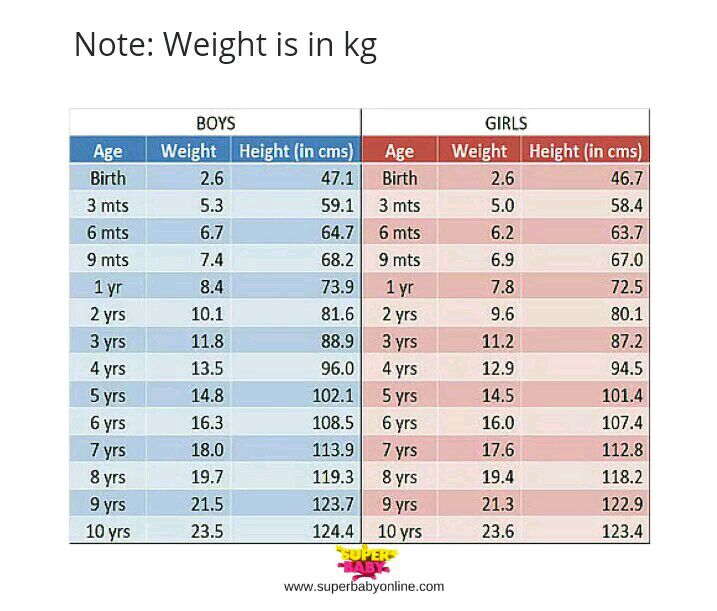 Therefore, do not worry. Our indicator is the well-being of the child. If the baby is active, eats with appetite, sleep is calm, the skin is clean, physiological functions are not disturbed, be calm, your baby is healthy and not hungry. You see from the table the range of weight per year is from 8 to 13 kg. This is the norm. There is no reason to run to the endocrinologist, genetics, to examine the child.
Therefore, do not worry. Our indicator is the well-being of the child. If the baby is active, eats with appetite, sleep is calm, the skin is clean, physiological functions are not disturbed, be calm, your baby is healthy and not hungry. You see from the table the range of weight per year is from 8 to 13 kg. This is the norm. There is no reason to run to the endocrinologist, genetics, to examine the child.
Or the opposite situation: in the first months of life, a child gains 1-1.5 kg while breastfeeding. If the baby does not have colic, he does not spit up, there are no gastrointestinal manifestations, he is active, the skin is clean, physiological functions are not disturbed - this is also the norm. Remember, as often happens, premature babies quickly gain weight and catch up with their peers by the year. And large babies gain weight more slowly. In my entire thirty-year practice, only two children weighed 14-15 kg by the year, although their parents were large and tall. By the age of three, they weighed almost the same, added only in height, the rest of their peers caught up with them.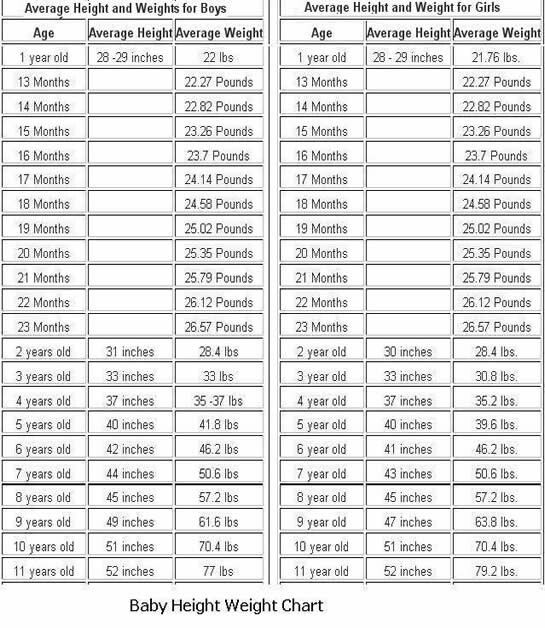
| Month | Weight gain in grams |
| one | 600.0 |
| 2 | 800.0 |
| 3 | 800.0 |
| four | 750.0 |
| 5 | 700.0 |
| 6 | 650.0 |
| 7 | 600.0 |
| eight | 550.0 |
| 9 | 500.0 |
| ten | 450.0 |
| eleven | 400.0 |
| 12 | 350.0 |
It is believed that by 4-4.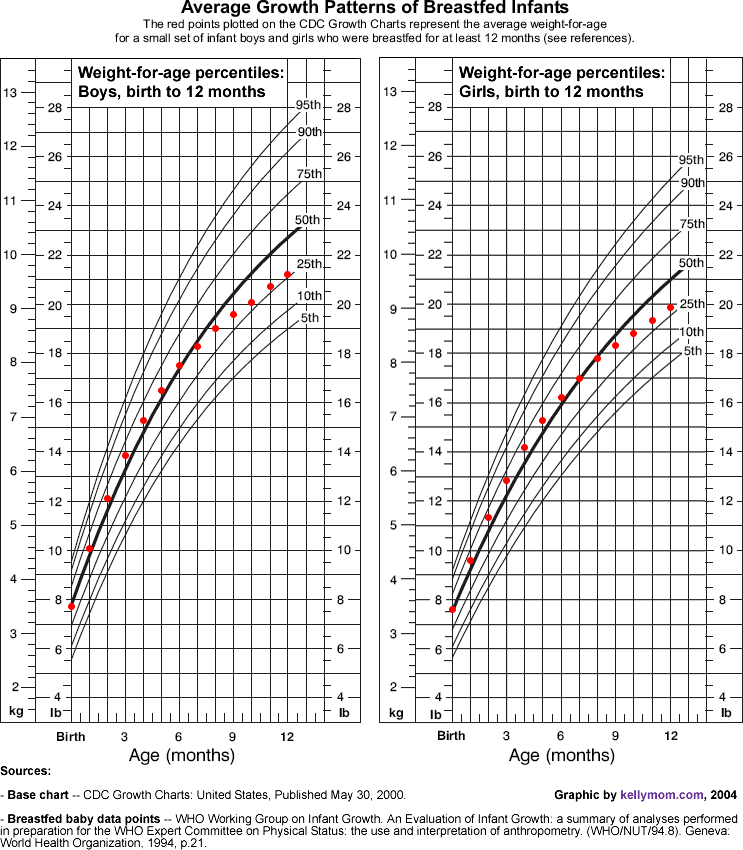 5 months the child should double the weight, and triple by the end of the year.
5 months the child should double the weight, and triple by the end of the year.
It happens that the increase in height and weight goes in leaps, seasonality, unevenness, and sometimes asymmetry of growth are noted. Pediatricians are concerned about the circumference of the head and chest, by 2-3 months they should be equal. Further, the breast grows faster. This is important so as not to miss the pathology.
The younger the child, the faster his growth. In the first 3 months of life, body length increases by 3 cm monthly, in the second quarter by 2.5-2 cm monthly. In the third - 1.5-2 cm, in the fourth - 1 cm monthly. The total increase in height in the first year of life is about 25 cm.
Centile tables for assessing the physical development of boys from 0 to 12 months.
| Body length (height), cm. Centiles in % | Age in months | Body weight, kg Centiles in % | ||||||||||||
| 3 | ten | 25 | fifty | 75 | 90 | 97 | 3 | ten | 25 | fifty | 75 | 90 | 97 | |
| 46. | 48.0 | 49.8 | 51.3 | 52.3 | 53.5 | 55.0 | 0 | 2.7 | 2.9 | 3.1 | 3.4 | 3.7 | 3.9 | 4.4 |
| 49.5 | 51.2 | 52.7 | 54.5 | 55.6 | 56.5 | 57.3 | one | 3.3 | 3.6 | 4.0 | 4.3 | 4.7 | 5.1 | 5.4 |
| 53.6 | 53.8 | 55.3 | 57.3 | 58. | 59.4 | 60.9 | 2 | 3.9 | 4.2 | 4.6 | 5.1 | 5.6 | 6.0 | 6.4 |
| 55.3 | 56.5 | 58.1 | 60.0 | 60.9 | 62.0 | 63.8 | 3 | 4.5 | 4.9 | 5.3 | 5.8 | 6.4 | 7.0 | 7.3 |
| 57.5 | 58.7 | 60.6 | 62.0 | 63.1 | 64.5 | 66.3 | four | 5. | 5.5 | 6.0 | 6.5 | 7.2 | 7.6 | 8.1 |
| 59.9 | 61.1 | 62.3 | 64.3 | 65.6 | 67.0 | 68.9 | 5 | 5.6 | 6.1 | 6.5 | 7.1 | 7.8 | 8.3 | 8.8 |
| 61.7 | 63.0 | 64.8 | 66.1 | 67.7 | 69.0 | 71.2 | 6 | 6.1 | 6.6 | 7.1 | 7.6 | 8. | 9.0 | 9.4 |
| 63.8 | 65.1 | 66.3 | 68.0 | 69.8 | 71.1 | 73.5 | 7 | 6.6 | 7.1 | 7.6 | 8.2 | 8.9 | 9.5 | 9.9 |
| 65.5 | 66.8 | 68.1 | 70.0 | 71.3 | 73.1 | 75.3 | eight | 7.1 | 7.5 | 8.0 | 8.6 | 9.4 | 10.0 | 10.5 |
| 67. | 68.2 | 69.8 | 71.3 | 73.2 | 75.1 | 75.5 | 9 | 7.5 | 7.9 | 8.4 | 9.1 | 9.8 | 10.5 | 11.0 |
| 68.8 | 69.1 | 71.2 | 73.0 | 75.1 | 76.9 | 78.8 | ten | 7.9 | 8.3 | 8.8 | 9.5 | 10.3 | 10.9 | 11.4 |
| 70.1 | 71.3 | 72.6 | 74.3 | 76. | ||||||||||

 5
5 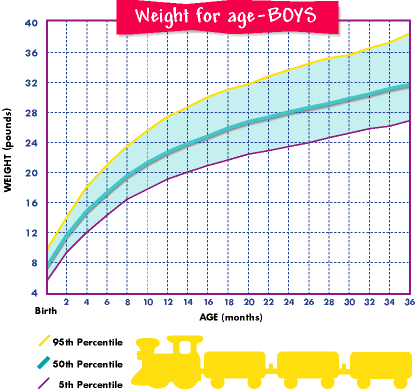 4
4  2
2  0
0 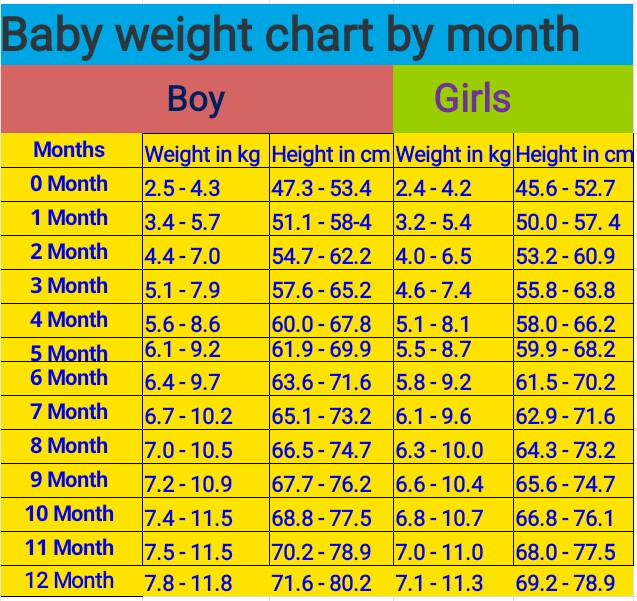 3
3 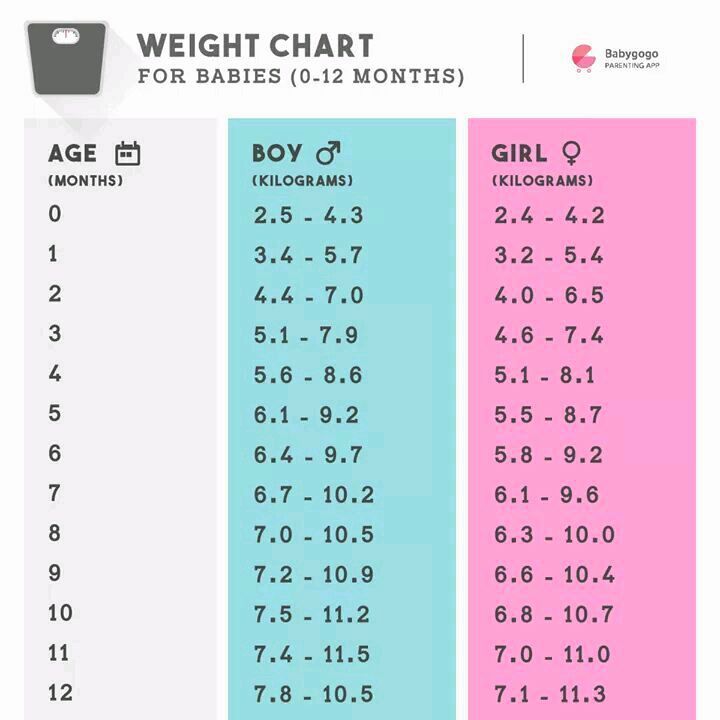 5
5 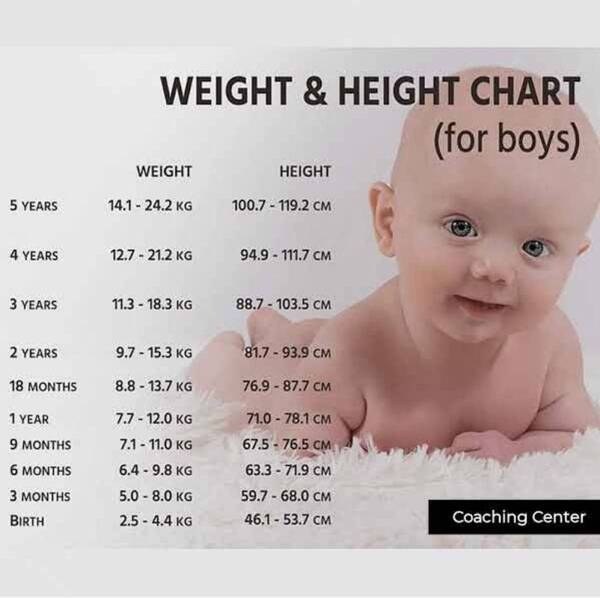 5
5 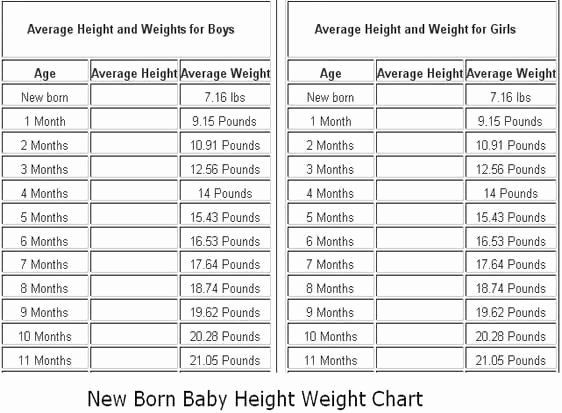 2
2  1
1 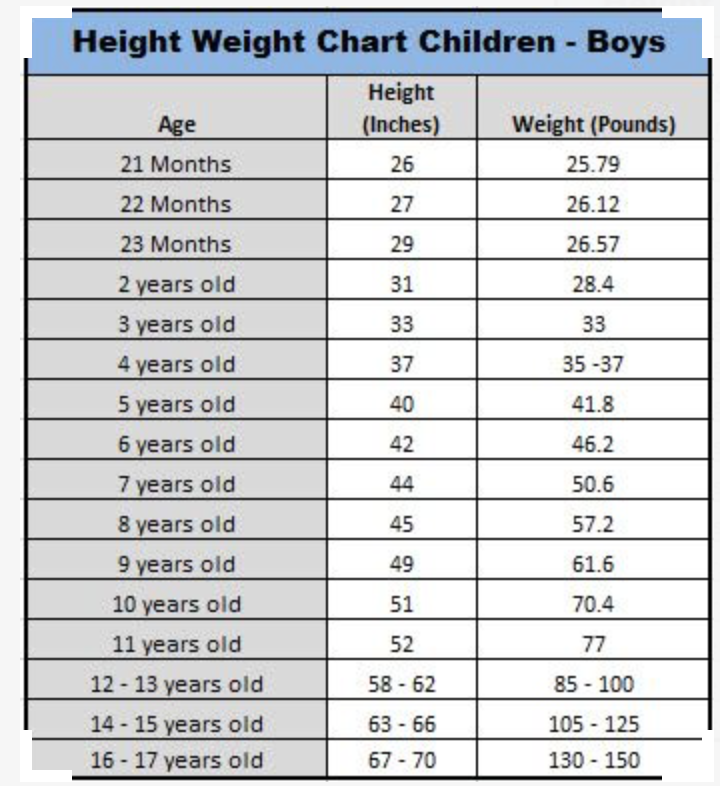 4
4 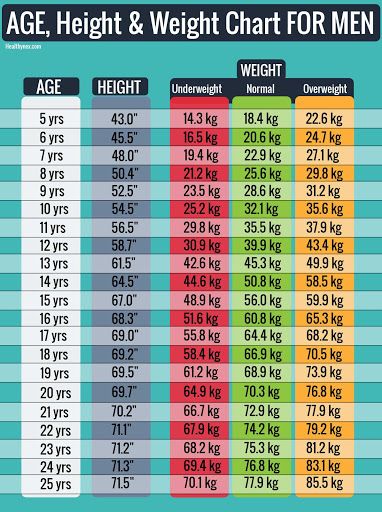 3
3 